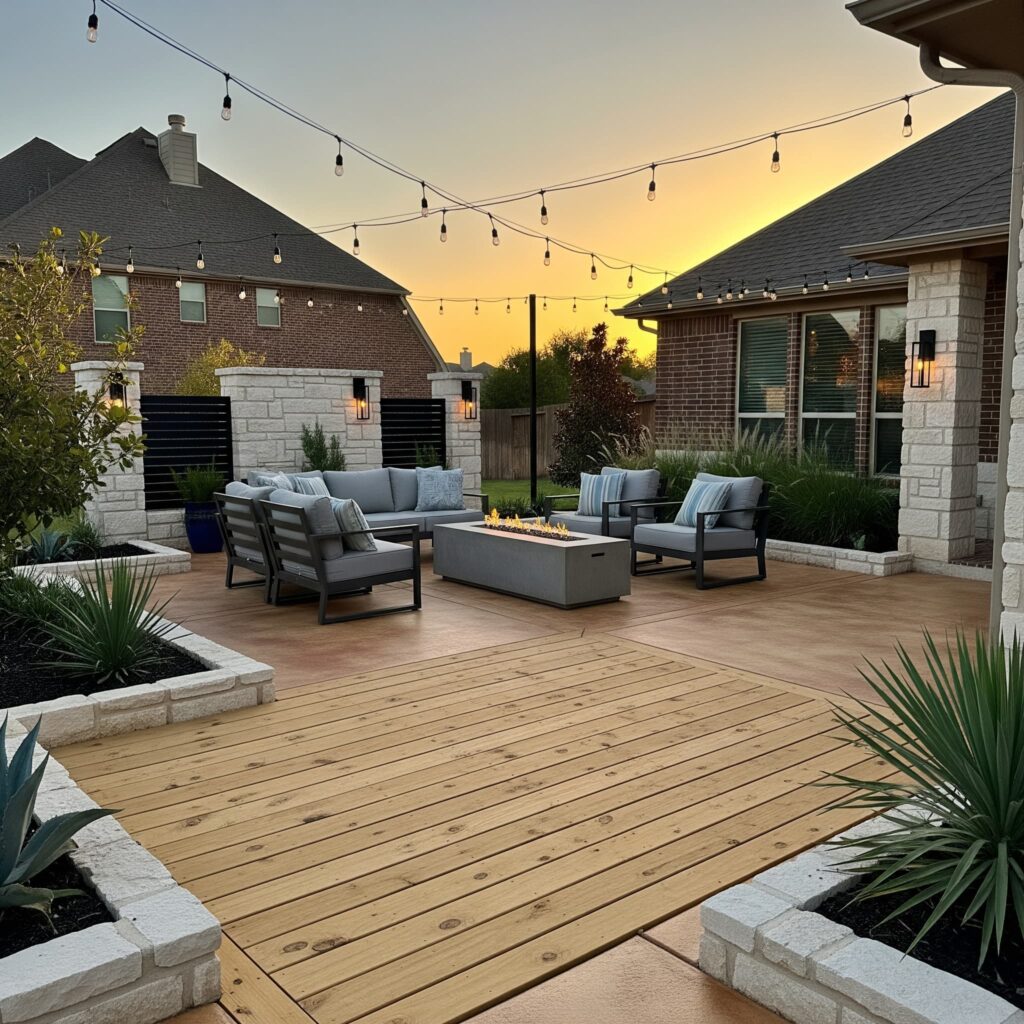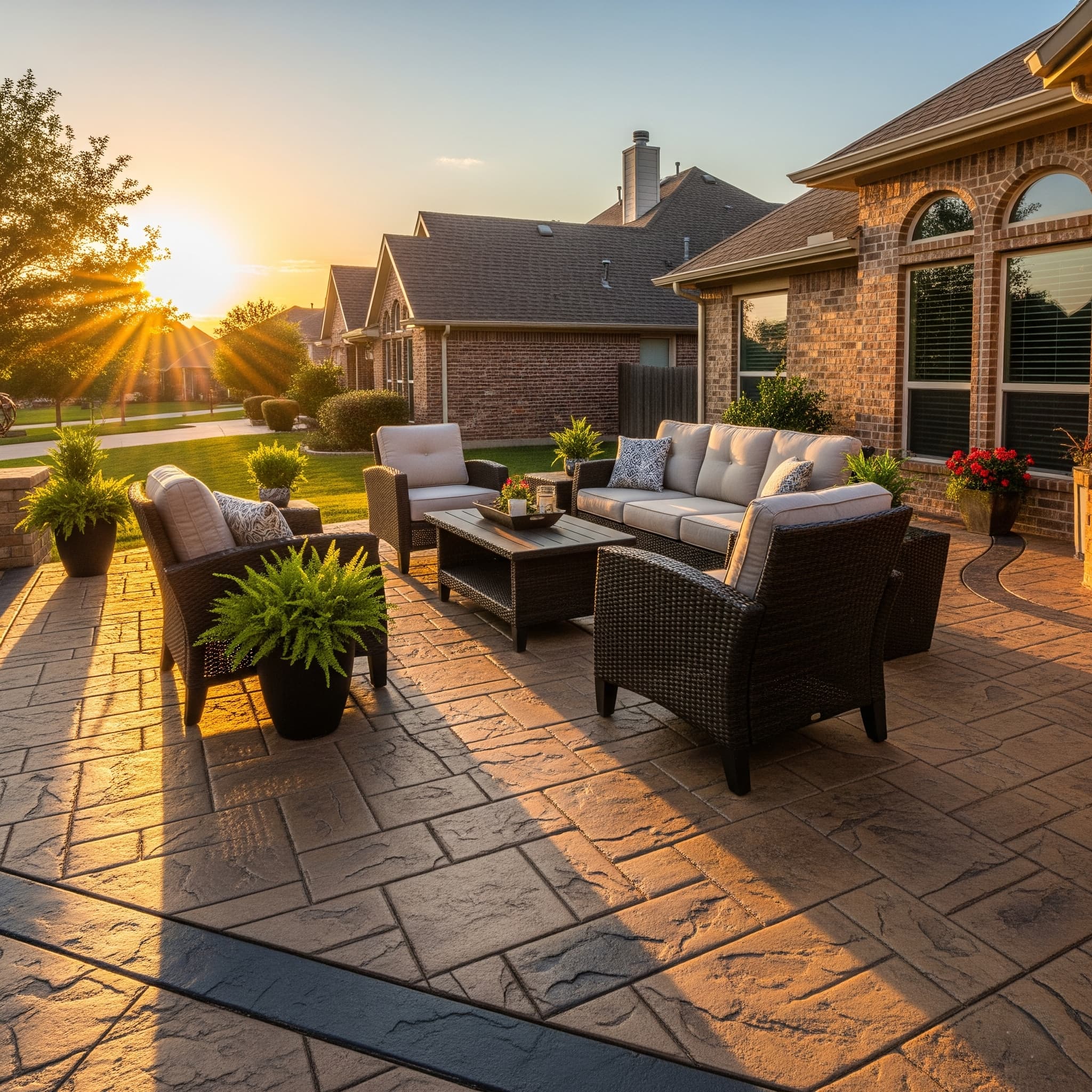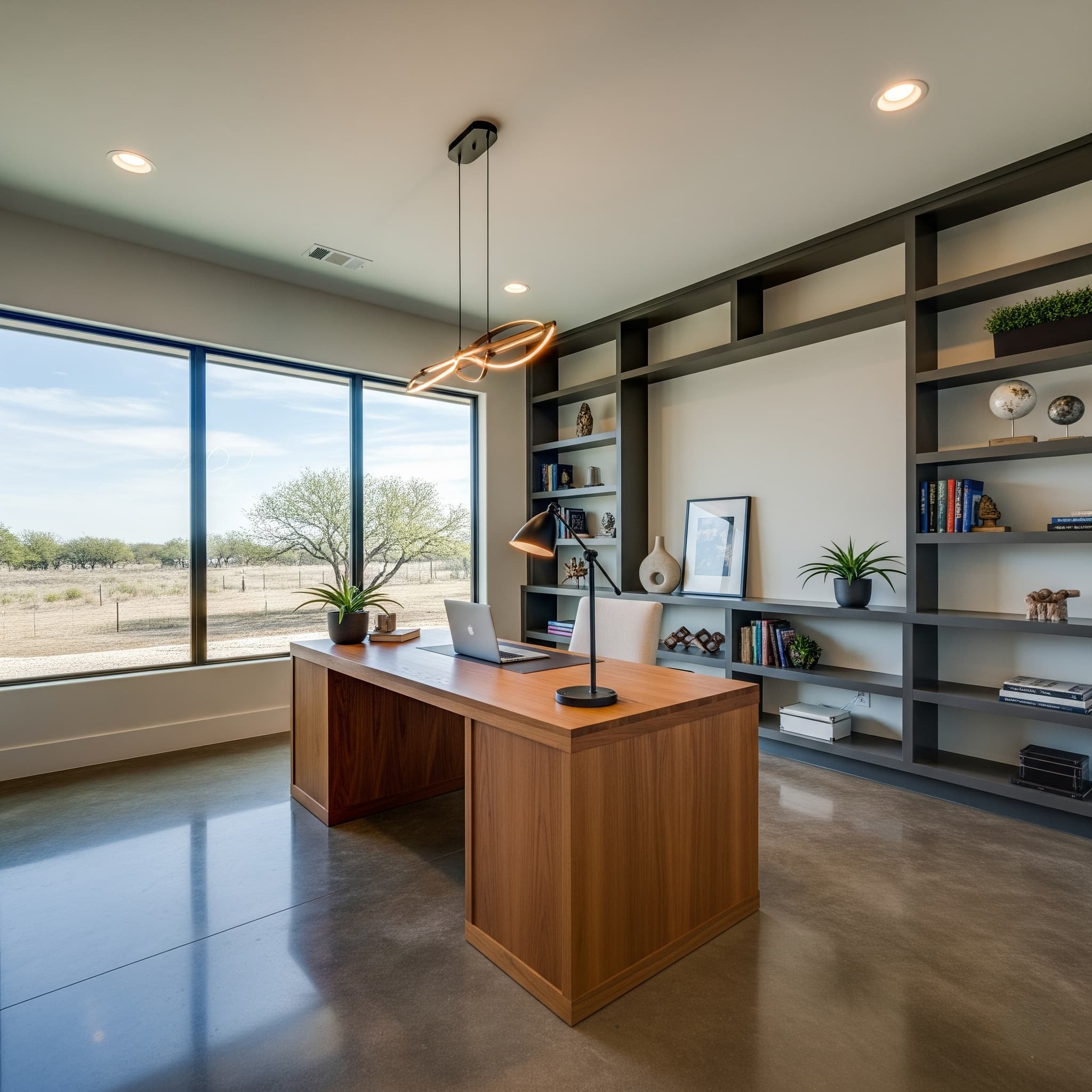
Mixing Materials: Wood or Stone with Decorative Concrete
Decorative Concrete
Modern outdoor design in Grand Prairie embraces the sophisticated art of mixing materials to create unique, visually striking spaces that reflect both contemporary aesthetics and natural beauty. Combining decorative concrete with wood or stone elements transforms ordinary patios, walkways, and outdoor living areas into extraordinary design statements that rival the entertainment districts found at EpicCentral or the magical displays at Prairie Lights. This design approach allows homeowners to achieve custom looks that balance durability with warmth, functionality with beauty, and modern appeal with timeless elegance. At Grand Prairie Concrete Pros, we specialize in seamlessly integrating multiple materials to create outdoor spaces that serve as natural extensions of your home’s interior design. Our expertise ensures that every material transition flows harmoniously while maintaining the structural integrity and longevity that decorative concrete provides.

The Philosophy of Mixed Material Design
Successful mixed material design goes beyond simply placing different elements together; it requires thoughtful consideration of how textures, colors, patterns, and proportions interact to create cohesive outdoor environments. Decorative concrete serves as an excellent foundation material that can complement virtually any natural or manufactured element while providing the durability needed for Grand Prairie’s climate challenges. The key to effective material mixing lies in understanding each material’s inherent characteristics and how they can enhance one another. Concrete provides structural stability, weather resistance, and design flexibility, while wood brings warmth, organic texture, and natural color variation. Stone contributes timeless elegance, unique patterns, and exceptional durability that ages gracefully over decades.
Design Principles for Material Integration
Balance becomes crucial when incorporating multiple materials, ensuring no single element overwhelms the overall design. Visual weight distribution considers both color intensity and texture prominence to create pleasing compositions that draw the eye naturally through the space. Proportion relationships between different materials should feel intentional rather than arbitrary. Transition zones require special attention, as these areas determine whether material changes appear deliberate or disjointed. Successful transitions can be achieved through gradual material shifts, complementary color palettes, or architectural elements that bridge different surface types.
Decorative Concrete and Wood Combinations
The pairing of decorative concrete with wood creates compelling contrasts that appeal to both modern and traditional design sensibilities. Concrete’s cool, industrial character provides the perfect counterpoint to wood’s warm, organic qualities, resulting in outdoor spaces that feel both sophisticated and inviting. Wood elements can be incorporated in numerous ways, from integrated deck sections that flow seamlessly into concrete patios to vertical accent walls that provide privacy and visual interest. Built-in seating areas combining concrete bases with wood tops offer both durability and comfort while creating natural gathering spots for entertaining.
Deck and Patio Integration
One of the most popular applications involves creating elevated wood deck areas that transition smoothly to ground-level concrete patios. This approach allows for distinct activity zones while maintaining visual continuity throughout the outdoor space. The elevated deck can serve as a dining area or quiet retreat, while the concrete patio accommodates larger gatherings and outdoor furniture arrangements. Wood borders and inlays within concrete surfaces create sophisticated patterns that break up large expanses while adding visual interest. These elements can follow architectural lines from the home or create entirely new geometric patterns that define different functional areas within the outdoor space.
Maintenance Considerations
While wood requires more maintenance than concrete, strategic placement and protection can minimize upkeep requirements. Covered areas, proper drainage, and quality finishes extend wood’s lifespan significantly. Additionally, the concrete elements provide stable, low-maintenance areas that balance the higher-maintenance wood components.
Stone and Concrete Harmonies
Natural stone and decorative concrete create timeless combinations that celebrate both engineered precision and natural beauty. Stone’s unique textures, colors, and patterns complement concrete’s versatility while adding elements that cannot be replicated artificially. This pairing works particularly well in Grand Prairie’s landscape, where natural limestone and sandstone elements echo the region’s geological character. Stone can be incorporated as accent borders, integrated water features, retaining walls, or decorative inlays that create focal points within larger concrete installations. The durability of both materials ensures long-term performance with minimal maintenance requirements.
Regional Stone Selection
Texas limestone, sandstone, and granite provide excellent options that complement decorative concrete while reflecting local character. These materials weather naturally in Grand Prairie’s climate and develop attractive patinas over time. Color coordination between stone selection and concrete tinting creates cohesive palettes that enhance rather than compete with architectural elements. Flagstone patterns within concrete surfaces create organic pathways and defined spaces that guide movement through outdoor areas. Random-cut stone provides informal, naturalistic appearances, while geometric cuts offer more structured, contemporary aesthetics.
Three-Material Combinations
Advanced designs incorporating concrete, wood, and stone create the most sophisticated outdoor environments that rival professional landscape installations. These combinations allow for complex zoning, varied textures, and rich color palettes that adapt to different lighting conditions throughout the day. Strategic material placement considers both functional and aesthetic requirements. Stone elements often work best in areas requiring exceptional durability, wood provides comfort and warmth in seating areas, while concrete serves as the unifying foundation that connects all elements.
Design Complexity Management
While three-material combinations offer maximum design flexibility, they require careful planning to avoid visual chaos. Successful installations establish clear hierarchies where one material dominates while others provide accent and support roles. Color relationships become critical for maintaining harmony across diverse textures and patterns. Professional design consultation ensures that complex material combinations achieve intended results while respecting practical considerations like maintenance access, drainage requirements, and structural integrity.
Functional Integration Strategies
Mixed material designs must prioritize functionality alongside aesthetics, ensuring that material transitions enhance rather than complicate outdoor living activities. Traffic flow patterns influence material placement, with high-wear areas utilizing the most durable options while comfort zones incorporate softer, more inviting elements. Built-in features like planters, seating walls, and fire pit surrounds provide natural opportunities for material mixing while serving practical purposes. These elements can incorporate all desired materials in compact areas that demonstrate the design approach without overwhelming smaller spaces.
Climate Adaptation
Grand Prairie’s climate presents specific challenges that influence material selection and placement strategies. Extreme temperature variations, intense UV exposure, and seasonal moisture changes affect all materials differently. Successful designs account for these factors through appropriate material selection, protective finishes, and strategic placement that minimizes weather exposure. Thermal expansion considerations become particularly important where different materials meet, requiring expansion joints and flexible connections that prevent cracking or separation over time.
Installation Excellence and Sequencing
Successful mixed material installations require careful sequencing and coordination among different trades and techniques. Concrete work typically establishes the foundation and primary structure, followed by wood installation and finally stone placement or integration. Each phase must consider the requirements of subsequent materials to ensure proper integration. Quality control throughout the installation process ensures that material transitions meet both aesthetic and structural requirements. Professional installation prevents common problems like uneven surfaces, inadequate drainage, or incompatible material combinations that can compromise long-term performance.
Project Planning Considerations
Comprehensive planning addresses material sourcing, installation sequencing, weather dependencies, and quality control measures that ensure successful outcomes. Detailed specifications prevent miscommunication while providing clear standards for measuring installation quality. Timeline coordination becomes critical when multiple materials and installation techniques are involved, requiring flexibility to accommodate weather delays or material availability issues while maintaining project momentum.
Long-term Performance and Value
Well-designed mixed material installations provide exceptional long-term value through enhanced durability, reduced maintenance requirements, and timeless aesthetic appeal that adapts to changing design trends. The investment in quality materials and professional installation pays dividends through decades of performance and enjoyment. Mixed material designs often increase property values more than single-material installations due to their custom appearance and sophisticated design character. These installations demonstrate attention to detail and quality that appeals to discerning buyers while providing immediate enjoyment for current homeowners. Trust Grand Prairie Concrete Pros to bring your mixed material vision to life with expert design guidance and flawless installation techniques. Our comprehensive approach ensures that every element works harmoniously while providing the durability and beauty that define exceptional outdoor living spaces. Contact us today to explore how creative material combinations can transform your Grand Prairie property into a showcase of sophisticated design and enduring quality.



